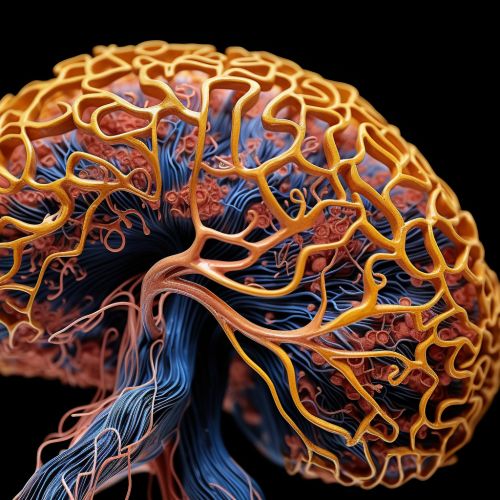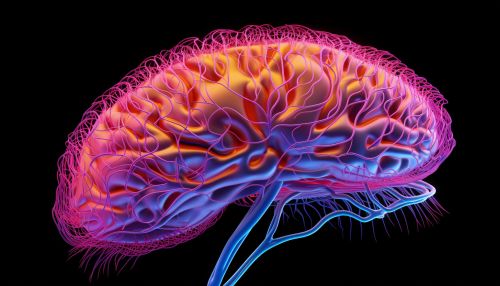Cognitive Neuroscience of Cognitive and Spatial Perception
Introduction
Cognitive neuroscience is a branch of neuroscience that studies the biological processes that underlie cognition, especially those that involve the brain. This discipline combines principles of psychology and neurobiology to understand how the brain contributes to cognitive processes such as perception, memory, and problem-solving. A key area of focus within cognitive neuroscience is the study of cognitive and spatial perception, which refers to how we perceive, understand, and interact with our physical environment.


Cognitive Perception
Cognitive perception is the interpretation of sensory information within the brain to understand its environment. It involves processes such as recognition, discrimination, and interpretation. Cognitive perception is central to how we interact with the world and is a key area of study in cognitive neuroscience. It is through cognitive perception that we are able to make sense of the sensory information that we receive from our environment.
Perception and the Brain
The brain plays a crucial role in cognitive perception. Different areas of the brain are involved in different aspects of perception. For example, the occipital lobe is primarily responsible for visual perception, while the temporal lobe is involved in auditory perception. The parietal lobe, on the other hand, plays a key role in integrating sensory information from various parts of the body, understanding spatial sense and navigation. The frontal lobe is involved in reasoning, problem-solving, and decision-making.
Perception and Cognition
Cognition refers to the mental processes involved in acquiring knowledge and understanding. These processes include thinking, knowing, remembering, judging, and problem-solving. These cognitive processes are intrinsically linked with perception. For example, our perception of the world is influenced by our knowledge and beliefs. Conversely, our cognitive processes are often influenced by our perceptions. For instance, our decision-making and problem-solving processes are often based on how we perceive a situation.
Spatial Perception
Spatial perception is a cognitive ability that allows an individual to understand and interact with the environment in terms of spatial relationships. It involves the perception of one's own body in space (proprioception), the perception of objects in relation to oneself (egocentric perception), and the perception of objects in relation to each other (allocentric perception).
Spatial Perception and the Brain
The brain plays a crucial role in spatial perception. The parietal lobe, in particular, is involved in processing spatial information and is responsible for our ability to navigate through space. The hippocampus, a small region within the medial temporal lobe, is also involved in spatial perception and memory. It is particularly important for the formation of cognitive maps, which are mental representations of our physical environment.
Spatial Cognition
Spatial cognition refers to the cognitive processes involved in the acquisition, organization, utilization, and revision of knowledge about spatial environments. These processes include spatial learning, spatial memory, spatial reasoning, and spatial problem-solving. Spatial cognition is crucial for many everyday activities, such as navigating through a city, finding our way in a building, or even reaching for a cup on a table.
Cognitive Neuroscience of Cognitive and Spatial Perception
The cognitive neuroscience of cognitive and spatial perception involves studying the neural mechanisms underlying these perceptual processes. This field of study uses various methods, including neuroimaging techniques such as functional magnetic resonance imaging (fMRI) and positron emission tomography (PET), as well as neuropsychological tests and experiments.
Neural Correlates of Perception
Research in cognitive neuroscience has identified several neural correlates of perception. These are specific brain regions or networks that are involved in specific perceptual processes. For example, the primary visual cortex in the occipital lobe is involved in processing visual information, while the primary auditory cortex in the temporal lobe is involved in processing auditory information. Similarly, the parietal lobe and the hippocampus are involved in spatial perception and navigation.
Neural Mechanisms of Spatial Cognition
Cognitive neuroscience research has also shed light on the neural mechanisms underlying spatial cognition. For instance, it has been found that the hippocampus plays a crucial role in spatial memory and navigation. The parietal lobe, on the other hand, is involved in spatial attention and spatial reasoning. Moreover, the prefrontal cortex is involved in spatial working memory and decision-making.
Conclusion
The cognitive neuroscience of cognitive and spatial perception is a rapidly evolving field that provides valuable insights into the complex neural mechanisms underlying our ability to perceive and interact with the world. By understanding these mechanisms, we can develop more effective treatments for neurological and psychiatric disorders that affect perception and cognition, and improve our understanding of the human mind.
